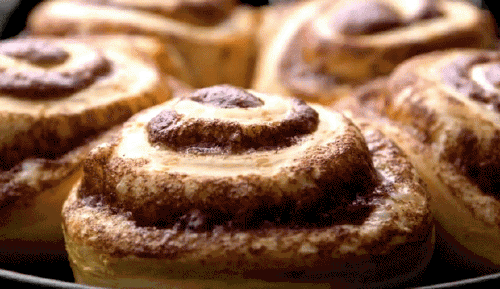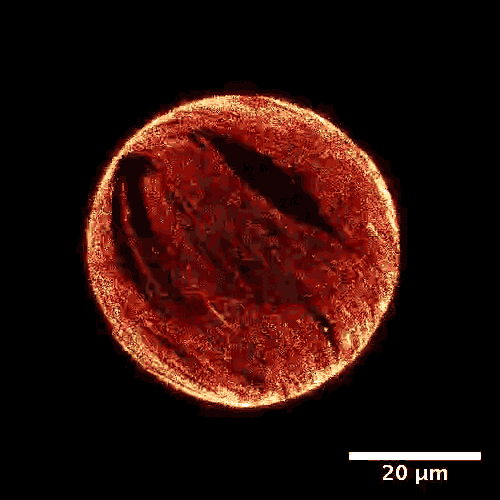Do You Ever Think About How Sperm Don’t Work Right At Body Temperature And That’s Why Males Have
Do you ever think about how sperm don’t work right at body temperature and that’s why males have external testicles? Design-wise that is such a huge risk to take. Your most important organ is swinging free outside your body, vulnerable to injury or attack. All because one (1) type of cell, your fucking gametes for christ’s sake, cannot function at the normal body temperature of the organism they belong to. What the fuck. I never want to hear a man try and say females are biologically inferior ever again.
More Posts from Just-looking-for-some-science and Others
What’s Up For September 2018?
Outstanding views Venus, Jupiter, Saturn and Mars with the naked eye!

You’ll have to look quickly after sunset to catch Venus. And through binoculars or a telescope, you’ll see Venus’s phase change dramatically during September - from nearly half phase to a larger thinner crescent!

Jupiter, Saturn and Mars continue their brilliant appearances this month. Look southwest after sunset.

Use the summer constellations help you trace the Milky Way.

Sagittarius: where stars and some brighter clumps appear as steam from the teapot.

Aquila: where the Eagle’s bright Star Altair, combined with Cygnus’s Deneb, and Lyra’s Vega mark the Summer Triangle.

Cassiopeia, the familiar “w”- shaped constellation completes the constellation trail through the Summer Milky Way. Binoculars will reveal double stars, clusters and nebulae.

Between September 12th and the 20th, watch the Moon pass from near Venus, above Jupiter, to the left of Saturn and finally above Mars!

Both Neptune and brighter Uranus can be spotted with some help from a telescope this month.

Look at about 1:00 a.m. local time or later in the southeastern sky. You can find Mercury just above Earth’s eastern horizon shortly before sunrise. Use the Moon as your guide on September 7 and 8th.

And although there are no major meteor showers in September, cometary dust appears in another late summer sight, the morning Zodiacal light. Try looking for it in the east on moonless mornings very close to sunrise. To learn more about the Zodiacal light, watch “What’s Up” from March 2018.

Watch the full What’s Up for September Video:
There are so many sights to see in the sky. To stay informed, subscribe to our What’s Up video series on Facebook.
Make sure to follow us on Tumblr for your regular dose of space: http://nasa.tumblr.com
Jupiter is strange for a number of reasons. It’s the biggest planet in our Solar System, of course. It harbors perhaps the most intense radiation environments. And, according to a new study, it has a magnetic field unlike that of any other known planet.
NASA’s Juno orbiter, a basketball court-sized spacecraft, is observing the gas giant as it circles the planet at varying distances. Scientists recently mapped Jupiter’s magnetic field at four depths, and noticed a strange hemispheric dichotomy: The northern hemisphere’s magnetic field was nothing like the southern hemisphere’s.
“It’s a baffling puzzle,” the study’s first author, Harvard Ph.D student Kimberly Moore, told Gizmodo. “Why is it so complicated in the northern hemisphere but so simple in the southern hemisphere?”
Continue Reading.
Molecule of the Day: Cinnamaldehyde


Cinnamaldehyde (C9H8O) is a yellowish, oily liquid found in the bark of cinnamon trees, and is a major component of the corresponding essential oil. It has the distinct scent of cinnamon, and is used in many foods as a flavouring agent, such as confectioneries and sweets.
Cinnamaldehyde has been shown to have antimicrobial effects, and has been used to produce antimicrobial paper in conjunction with carvacrol. It is also a fungicide, insecticide, and a repellent for many animals.
It is also a key precursor and parent compound to many aroma compounds used in perfumery, such as alpha-alkyl cinnamaldehydes (shown below), and dihydrocinnamaldehyde.

Cinnamaldehyde is biosynthesised from phenylalanine through several steps:

In the laboratory, it can also be synthesised from benzaldehyde (Day 2) and acetaldehyde (ethanal) via an acid- or base-catalysed aldol condensation reaction, which produces water as a side product:

However, it is more economically efficient to produce it via extraction from cinnamon bark, which is thus the major industrial method for cinnamaldehyde production.

Requested by anonymous
“So this is the composition by % of an average humans blood. Sadly there’s no such thing as an average person so this varies a lot and creates problems.”
— Biophysics professor, talking about haemodialysis biophysics,



Synthetic Cells Move On Their Own
What look like animated illustrations that could easily spring from a child’s imagination are actually newly unveiled artificial cells under a microscope.
Biophysicists at Germany’s Technical University of Munich along with an international team developed simple self-propelled biomachines in a quest to create cell models that display biomechanical functions.
The researchers say their work represents the first time a movable cytoskeleton membrane has been fabricated.
Keep reading
What Science is Launching to Space?

The tenth SpaceX cargo resupply mission launched to the International Space Station on Feb. 18, and is carrying science ranging from protein crystal growth studies to Earth science payloads. Here’s a rundown of some of the highlights heading to the orbiting laboratory.

The CASIS PCG 5 investigation will crystallize a human monoclonal antibody, developed by Merck Research Labs, that is currently undergoing clinical trials for the treatment of immunological disease. Results from this investigation have the potential to improve the way monoclonal antibody treatments are administered on Earth.

Without proteins, the human body would be unable to repair, regulate or protect itself. Crystallizing proteins provides better views of their structure, which helps scientists to better understand how they function. Often times, proteins crystallized in microgravity are of higher quality than those crystallized on Earth. LMM Biophysics 1 explores that phenomena by examining the movement of single protein molecules in microgravity. Once scientists understand how these proteins function, they can be used to design new drugs that interact with the protein in specific ways and fight disease.

Much like LMM Biophysics 1, LMM Biophysics 3 aims to use crystallography to examine molecules that are too small to be seen under a microscope, in order to best predict what types of drugs will interact best with certain kinds of proteins. LMM Biophysics 3 will look specifically into which types of crystals thrive and benefit from growth in microgravity, where Earth’s gravity won’t interfere with their formation. Currently, the success rate is poor for crystals grown even in the best of laboratories. High quality, space-grown crystals could improve research for a wide range of diseases, as well as microgravity-related problems such as radiation damage, bone loss and muscle atrophy.


Nanobiosym Predictive Pathogen Mutation Study (Nanobiosym Genes) will analyze two strains of bacterial mutations aboard the station, providing data that may be helpful in refining models of drug resistance and support the development of better medicines to counteract the resistant strains.

During the Microgravity Expanded Stem Cells investigation, crew members will observe cell growth and morphological characteristics in microgravity and analyze gene expression profiles of cells grown on the station. This information will provide insight into how human cancers start and spread, which aids in the development of prevention and treatment plans. Results from this investigation could lead to the treatment of disease and injury in space, as well as provide a way to improve stem cell production for human therapy on Earth.

The Lightning Imaging Sensor will measure the amount, rate and energy of lightning as it strikes around the world. Understanding the processes that cause lightning and the connections between lightning and subsequent severe weather events is a key to improving weather predictions and saving life and property.

From the vantage of the station, the LIS instrument will sample lightning over a wider geographical area than any previous sensor.

Future robotic spacecraft will need advanced autopilot systems to help them safely navigate and rendezvous with other objects, as they will be operating thousands of miles from Earth.

The Raven (STP-H5 Raven) studies a real-time spacecraft navigation system that provides the eyes and intelligence to see a target and steer toward it safely. Research from Raven can be applied toward unmanned vehicles both on Earth and in space, including potential use for systems in NASA’s future human deep space exploration.

SAGE III will measure stratospheric ozone, aerosols, and other trace gases by locking onto the sun or moon and scanning a thin profile of Earth’s atmosphere.

These measurements will allow national and international leaders to make informed policy decisions regarding the protection and preservation of Earth’s ozone layer. Ozone in the atmosphere protects Earth’s inhabitants, including humans, plants and animals, from harmful radiation from the sun, which can cause long-term problems such as cataracts, cancer and reduced crop yield.

Tissue Regeneration-Bone Defect (Rodent Research-4) a U.S. National Laboratory investigation sponsored by the Center for the Advancement of Science in Space (CASIS) and the U.S. Army Medical Research and Materiel Command, studies what prevents other vertebrates such as rodents and humans from re-growing lost bone and tissue, and how microgravity conditions impact the process.

Results will provide a new understanding of the biological reasons behind a human’s inability to grow a lost limb at the wound site, and could lead to new treatment options for the more than 30% of the patient.
Make sure to follow us on Tumblr for your regular dose of space: http://nasa.tumblr.com

Farewell online privacy

30,000 year old flower revived.
Scientists have resurrected a flower from plant tissues found frozen in Siberian permafrost, thought to be 30,000-32,000 years old. The new Silene stenophylla is healthy and fertile, and producing viable seeds.
The experiment has excited many because it proves that material trapped in the permafrost is recoverable and usable - scientists have been working to recover other species of plant and animal life from the same area, such as the woolly mammoth.
-
 nine-of-spades liked this · 1 week ago
nine-of-spades liked this · 1 week ago -
 monarachnid liked this · 2 months ago
monarachnid liked this · 2 months ago -
 mywindowtears liked this · 3 months ago
mywindowtears liked this · 3 months ago -
 notgonnapost4 reblogged this · 4 months ago
notgonnapost4 reblogged this · 4 months ago -
 notgonnapost4 liked this · 4 months ago
notgonnapost4 liked this · 4 months ago -
 donttellhertosmile reblogged this · 4 months ago
donttellhertosmile reblogged this · 4 months ago -
 merryhaze reblogged this · 4 months ago
merryhaze reblogged this · 4 months ago -
 danetrc liked this · 5 months ago
danetrc liked this · 5 months ago -
 annahz3m2 liked this · 5 months ago
annahz3m2 liked this · 5 months ago -
 anna5skcc liked this · 5 months ago
anna5skcc liked this · 5 months ago -
 annarm02d liked this · 5 months ago
annarm02d liked this · 5 months ago -
 deviruo reblogged this · 8 months ago
deviruo reblogged this · 8 months ago -
 deviruo liked this · 8 months ago
deviruo liked this · 8 months ago -
 rupturedskywrites reblogged this · 11 months ago
rupturedskywrites reblogged this · 11 months ago -
 rupturedskywrites liked this · 11 months ago
rupturedskywrites liked this · 11 months ago -
 thisisgettingdifficult reblogged this · 1 year ago
thisisgettingdifficult reblogged this · 1 year ago -
 somepoetryshit liked this · 1 year ago
somepoetryshit liked this · 1 year ago -
 insertblogaesthetichere reblogged this · 1 year ago
insertblogaesthetichere reblogged this · 1 year ago -
 wearetekkenrp liked this · 1 year ago
wearetekkenrp liked this · 1 year ago -
 actualevildevil liked this · 1 year ago
actualevildevil liked this · 1 year ago -
 o-olli3 liked this · 1 year ago
o-olli3 liked this · 1 year ago -
 yaz-the-spaz liked this · 1 year ago
yaz-the-spaz liked this · 1 year ago -
 esquikoko liked this · 1 year ago
esquikoko liked this · 1 year ago -
 imfeelingsmall reblogged this · 1 year ago
imfeelingsmall reblogged this · 1 year ago -
 imfeelingsmall liked this · 1 year ago
imfeelingsmall liked this · 1 year ago -
 allfortzu liked this · 1 year ago
allfortzu liked this · 1 year ago -
 ohjinyoung liked this · 1 year ago
ohjinyoung liked this · 1 year ago -
 kaikkim liked this · 1 year ago
kaikkim liked this · 1 year ago -
 perfumedepartment liked this · 1 year ago
perfumedepartment liked this · 1 year ago -
 siuwen reblogged this · 1 year ago
siuwen reblogged this · 1 year ago -
 clonewarsahsoka reblogged this · 1 year ago
clonewarsahsoka reblogged this · 1 year ago -
 clonewarsahsoka liked this · 1 year ago
clonewarsahsoka liked this · 1 year ago -
 lovepropaganda reblogged this · 1 year ago
lovepropaganda reblogged this · 1 year ago -
 mittromulan liked this · 1 year ago
mittromulan liked this · 1 year ago -
 pixelcats liked this · 1 year ago
pixelcats liked this · 1 year ago -
 mala-santa-radfem liked this · 1 year ago
mala-santa-radfem liked this · 1 year ago -
 kai-etudie reblogged this · 1 year ago
kai-etudie reblogged this · 1 year ago -
 kai-etudie liked this · 1 year ago
kai-etudie liked this · 1 year ago -
 tremendousmagazinekoala liked this · 1 year ago
tremendousmagazinekoala liked this · 1 year ago -
 dukeness01 liked this · 1 year ago
dukeness01 liked this · 1 year ago -
 suspiciously-pink liked this · 1 year ago
suspiciously-pink liked this · 1 year ago -
 thenumbereight liked this · 1 year ago
thenumbereight liked this · 1 year ago -
 thenine9nein liked this · 1 year ago
thenine9nein liked this · 1 year ago
Some of us may not like science, but we all desperately need it
16 posts

